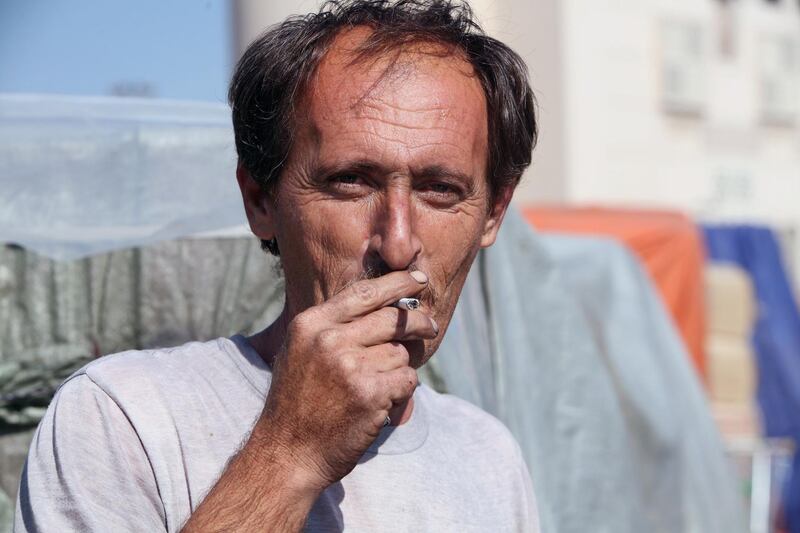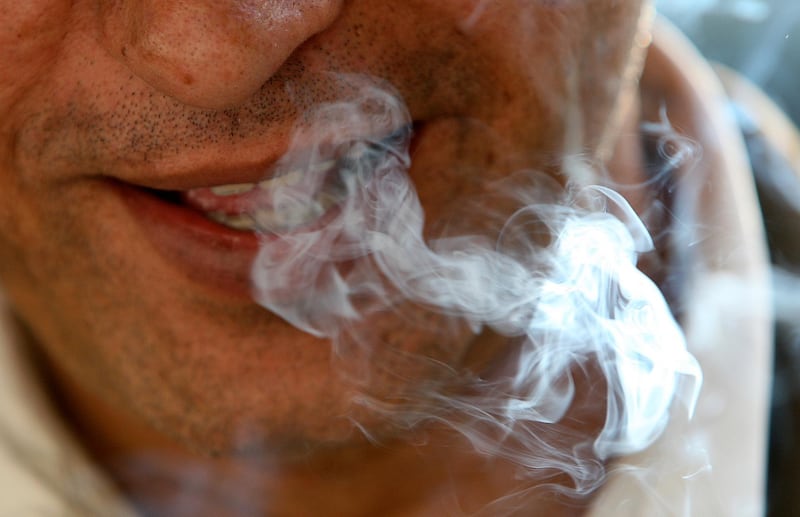Turn the clock back three decades and the rate of death from smoking in New Zealand was more than twice that in the UAE.
In 1990, about 158 out of every 100,000 people in New Zealand died from smoking each year, according to OurWorldinData. The same year, the rate in the UAE was about 60 per 100,000.
Today, the two countries’ relative performance is very different. The annual death rate in the UAE has gone up slightly, standing at nearly 66 per 100,000 people, according to the most recent figures, which are from 2017.
Reflecting a decline in smoking rates sustained over decades, New Zealand now has an annual death rate from smoking little more than one third what it was in 1990, with just under 54 deaths per 100,000.
Future generations
New Zealand recently announced a move to reduce smoking’s toll: a ban on anyone born after 2008 buying cigarettes or other tobacco products in their lifetime.
It has been a leader in clamping down on tobacco, which is smoked by about one in five adults across the world (about 35 per cent of men and six per cent of women).
Rates have fallen heavily in much of the developed world, but they are declining in much of the developing world, too, including in countries that never reached the high levels of smoking experienced by richer nations in the 20th century.

The UAE’s smoking rates are thought to be below the global average, with about 14 per cent of men and two per cent of women regularly lighting up.
Risk to health
While there are other lifestyle-related factors in the UAE that are harmful to health, including poor diet and lack of exercise – which are blamed for the high rates of obesity and diabetes – smoking remains one of the most significant.
“Smoking is a major factor for cardiac disease,” said Dr Davinder Pal Singh, a cardiologist at NMC Royal Hospital in Dubai Investments Park.
“Lack of physical activity and an unhealthy diet are also contributors to cardiac disease.”
That many people are turning away from tobacco is understandable: smoking is the cause of multiple health harms, including lung cancer and cardiovascular disease, and it kills more than seven million people around the world each year.
Changing the law
“The best thing that any government can do is to implement in full the World Health Organisation (WHO) Framework Convention on Tobacco Control and its guidelines,” said Deborah Arnott, chief executive of Action on Smoking and Health, a UK campaign organisation.
The WHO’s highest-level measures to cut demand for tobacco include five key criteria, among them having taxes that comprise at least 75 per cent of the retail price of the most popular brands, and a ban on smoking in areas such as government facilities, offices and hospitality venues.
Other measures include large warnings covering at least half the front and back of the cigarette packet, a ban on advertising, promotion and sponsorship, and cessation programmes at least partly funded by the authorities.

According to a study published in 2017 in The Lancet by researchers in Canada and the US, countries that implemented smoking controls to the highest level “experienced significant decreases in smoking prevalence”.
The study also stated that tobacco tax and price increases were the “fastest-acting and most effective” policy measures.
While the UAE has not introduced all of the most stringent recommended measures, regulations around tobacco in the Emirates have tightened.
In October 2017, the UAE brought in its first "sin tax”, when a 100 per cent levy was introduced on tobacco and tobacco products, along with energy drinks and carbonated beverages. This meant that tax comprises 50 per cent of the retail price, not 75 per cent, as the WHO suggested.
Just over two years later, a 100 per cent tax on e-cigarettes and vaping liquid was brought in, as was a 50 per cent tax on fizzy sugary drinks.
The government also said then that a cigarette must cost at least 40 fils, meaning that a packet of 20 costs at least Dh8, which is more than double the price of some of the cheapest cigarettes.
Polls have indicated that about three-quarters of UAE smokers have not changed their habits because of the taxes, although a minority have.
Other recommended measures brought in by the Emirates include warnings that cover at least half of the main display area of packaging.
Also as advised, smoking is banned on public transport and some other locations, and advertising is prohibited in print and electronic media, although some tobacco sponsorship is allowed.
Shisha remains popular, although some studies indicate it is more harmful than cigarettes, and medwakh, the strong tobacco smoked in pipes, is also widely used.
What next for the UAE?
While the UAE has introduced a series of measures to cut tobacco use, it has yet to follow New Zealand’s first-of-its-kind age restriction.
“New Zealand has consulted on this and decided it’s right for them,” Ms Arnott said.
“However, our belief is that the priority is to raise the age of sale from 18 to 21, as this will be easier to enforce and there’s already good evidence from the US that it works.”
In the UAE, as in many other countries, the age of sale is currently 18, so this may be an area where a tightening of restrictions could cut smoking rates again.
If successful in shifting people away from tobacco, death rates may fall in the decades to come, although such mortality figures in the UAE may in part reflect the smoking activities of expatriates, and the tobacco habits they developed before they moved to the Emirates.












